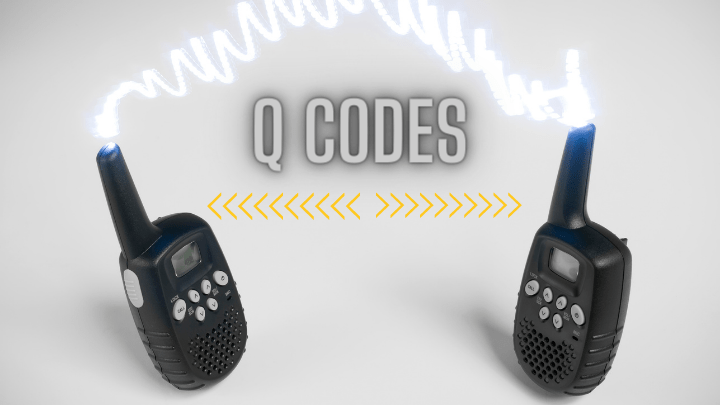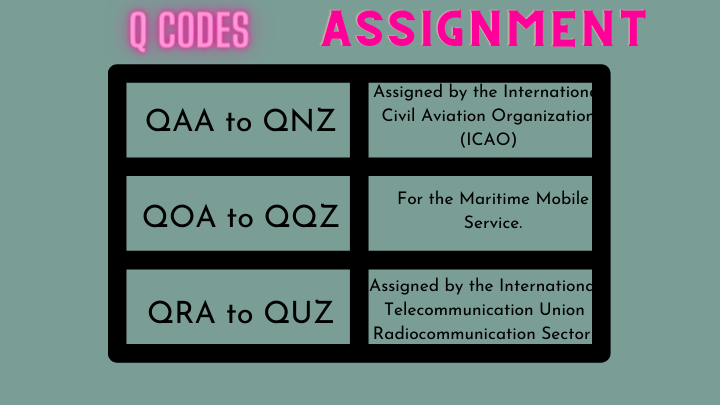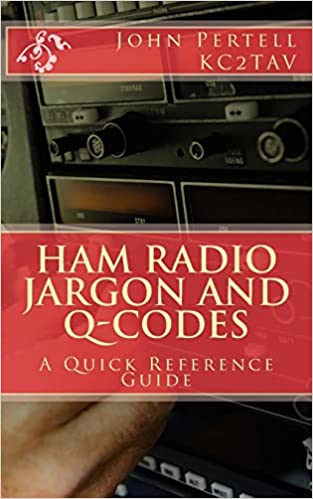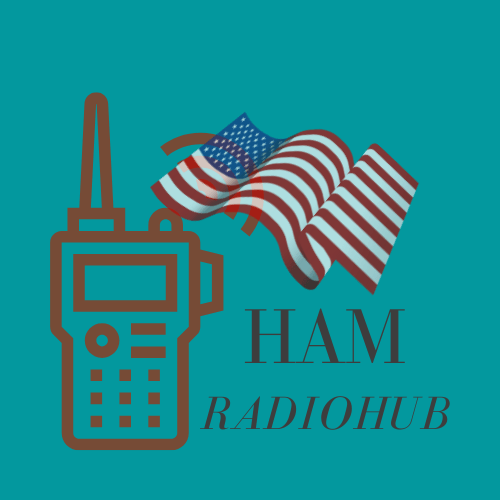HAM Radio Q codes: Introduction
Before diving into HAM radio Q codes, we should first know about Q codes.
Whenever two entities communicate over radio frequency, there is always some common information that must be shared e.g. name, location, call-sign, type of emergency being conveyed etc. (It is just like in the beginning of era of “Chat rooms” when every person joining chat room would ask first question as “ALS please?” Meaning Age, Sex and Location please). So in order to save time and bandwidth, the most common type of messages which are most likely to be exchanged between two entities are converted to three digit codes called “Q codes”
Why it is called Q codes
Well, as each 3-digit or 3-letter code starts with letter “Q” and ends with either question mark “?” or full stop “.” (if it is an answer), it is so called Q-codes.
What are HAM radio Q codes

Ham radio Q codes are set of 3 letter codes widely used by ham radio operators across the world today. Since the introduction in early 20th century, Q codes are very handy tool for amateur radio operators to share information such as requesting call-sign, requesting location, requesting frequency, seeking confirmation of successful receipt of a message etc.
As a HAM radio operator it is always a good practice to remember some essential Q-codes and it’s meaning and keep Q-codes list handy.
How many Q-codes are there?
Since the inception by British government in 1909, There were about 75 Q-codes in use, but as some codes were retired, currently a total of 45 Q-codes in use. Lately as radio communication practices changed, the codes were also modified. Here is a brief idea of how Q-codes are allotted service wise.

Most important Q-codes for HAM radio operators
As it is not possible to remember all the Q-codes and all of them may not be that handy every time, you can just remember most important Q-codes being an Ham radio operator. Here is a list of some important Q-codes that are useful being an Amateur radio operator for you.
| Q CODE | MEANING |
|---|---|
| QRM | Are you being interfered with? |
| QRN | Are you troubled by static noise? |
| QRO | Shall I increase power? |
| QRP | Shall I decrease power? |
| QRT | Shall I stop transmission? |
| QRZ | Who is calling me? |
| QSB | Are my signals fading? |
| QSL | Can you acknowledge receipt? |
| QSY | Shall I change frequency? |
| QTH | What is your location? |
HAM Radio Q codes pdf
Here is a Digital Download (paid) for 10 Most Important Q-Codes for Ham Radio Operators (Click Link) which is useful for pasting at your Ham Radio Station or working desk.
It is always a good practice to keep a list of HAM radio q codes handy. It is also a good practice to have a HAM radio Q code list pdf on your digital devices or you can have a Q code list printed and pasted on your ham shack. You can also have this list customized for a good look on your ham shack.
Here I have prepared a HAM Radio Q codes pdf (free) for your ready reference to download.
Here is another Ham Radio Jargon and Q-Codes: A Quick Reference Guide in amazon you can use for reference.

click here to download HAM radio Q codes pdf for free.
FAQs on HAM Radio Q codes
FAQ 1: Are HAM radio Q codes universally understood?
Answer: Yes, the Q codes are internationally recognized and understood by amateur radio operators across different countries. They provide a common language that helps overcome language barriers and ensures effective communication.
FAQ 2: Are HAM radio Q codes limited to a specific language?
Answer: No, HAM radio Q codes are not limited to a specific language. They are used globally and are designed to be language-neutral. However, their pronunciation or interpretation may vary slightly across different regions or languages.
FAQ 3: How many HAM radio Q codes are there?
Answer: There are several Q codes used in amateur radio communication, covering a wide range of topics. The original Q code list contained 45 codes, but additional codes have been introduced over time to accommodate new requirements and technologies.
FAQ 4: Can I create my own Q codes for HAM radio communication?
Answer: While the existing set of Q codes is well-established and widely used, it is possible for individual amateur radio operators or groups to create their own codes for specific purposes. However, it is essential to ensure that these codes are understood by all parties involved in the communication.
FAQ 5: Are there any alternative systems to HAM radio Q codes?
Answer: Yes, apart from the Q code system, there are other shorthand systems and abbreviations used in HAM radio communication. Some operators may prefer to use abbreviations specific to their region or group, but the Q code system remains the most widely recognized and standardized set of codes.
HAM Radio Q codes: Conclusion
I believe now you have a good enough idea, that Knowing and using HAM Radio Q codes is an essential and invaluable skill for radio operators. These codes do provide a standardized approach to transmitting information, and also ensures that messages are communicated quickly and accurately, which is particularly important during emergency situations or when channel space is limited.
As a result, the recognition of Q codes has grown worldwide and is now commonly used by amateur radio operators and organizations alike. Staying connected and informed in today’s speedy world requires quick communication, so having these Q codes in your arsenal (whether you remember it or have a HAM radio q codes pdf or it may be well organised printed list on wall of your ham shack) guarantees accuracy and speed in transmission. Understanding the use of HAM Radio Q codes is therefore a vital resource that all radio operators should utilize.
Other blog posts from the category:
- Baofeng BF F8HP Unlock frequencies (UV 5R Unlocking)
- Ham Radio vs Walkie Talkie: Differences: February 2024
- Baofeng uv-9g unlocking: Ultimate How to Guide Updated 2024
- Ham Radio vs GMRS: Comparative guide 2023
- HAM radio signal report: Crack the 3 step RST system
- A clear guide to HAM Radio Phonetic alphabets & abbreviations: pdf Download
- HAM Radio Q codes: The easy guide | HAM Radio q codes pdf download

